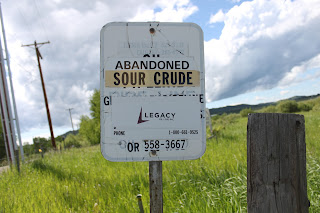Nanoparticles in Your Food
B. McPherson
Are you ingesting nanoparticles with your tasty lunch? What
the heck is a nanoparticle? It’s something that is definitely smaller than a
bread box. What the heck is a bread box? Never mind, it was in use when food
was food. Back to the subject – a nanoparticle is a piece of matter that is
smaller than one billionth of a metre(about 39 inches) across.
Nanoparticles occur naturally. They are present in wood
smoke and industrial by-products. Now clever researchers have found ways to
produce nanoparticles tailored to do specific jobs. Some of the jobs these tiny
bits of matter do involve the cosmetic and food industries.
This is a new and exciting branch of science. When
substances are reduced to a few molecules, they behave differently that when
they are a more substantial size. Uses for this new area are being found almost
daily. One of the areas with much potential is the food industry.
The American Food and Drug Agency(FDA) is aware of the
possible ramifications of using nanoparticles in food and cosmetics. In 2011
they issued draft guides to industry regarding the use of the new technology in
food production and cosmetics. As well as their draft guides they reiterate the
responsibility for safety lies with industry.
Industry remains responsible for ensuring that its products meet all applicable legal requirements, including standards for safety -- regardless of the emerging nature of a technology involved in the manufacturing a product.
Perhaps you and I think of food as something that grows
under the sun, roots in loamy soil and occasionally doused with rain. Or you
might think of your steak coming from one of those white faced cattle grazing
on green meadows. You might even think
of food as something your body needs, much like providing fuel for your amazing
furnace.
Others think differently. Following is a quote taken from a
workshop about nanotechnology and food.
The third presenter, Jochen Weiss of the University of Massachusetts, Amherst, provided an overview of how nanotechnologies are being developed to add novel functionalities to food products.
Another scientist at the same conference concluded his
presentation with this caveat.
We do not fully understand, however, how most of these structures are going to function within the food matrix where they will be applied. Many unanswered questions remain about their lifetime, mobility, and location inside actual food systems. Understanding this complex interaction between the nanostructures and the food products that contain them is critical to discussing safety.
In other words, they can build the structures but they don’t
know what they will do in your body.
The global food industry is massive, garnering in the
trillions of dollars every year. And, unlike other industries food never loses
its market. Uses for this new technology range from delivering increased
nutrition to detecting food spoilage.
On the other side of the discussion are the organic and
biodynamic farmers who see many dangers in adopting this emerging technology.
The following is a statement taken from Friends of the Earth.
Nanotechnology is the high technology, atomically processed antithesis to organic agriculture, which values the natural health-giving properties of fresh, unprocessed wholefoods. It further transforms the farm into an automated extension of the high technology factory production line, using patented products that will inevitably concentrate corporate control. It also introduces serious new risks for human health and the environment.
There are also huge privacy issues associated with the
tagging of food and food products with nanotags. The tags can then be tracked
from field or factory or feed lot to your fridge. If you think that the NSS is
intrusive now, how about when it can detect what’s sitting in your fridge and
interacting with your ‘smart’ appliances.
In Canada no labelling of nanointerfered food is required. I
think I’ll stick with my organic seeds and my organic/biodynamic vegetable
garden.
Word to the wise: You
are what you eat.

Comments
Post a Comment